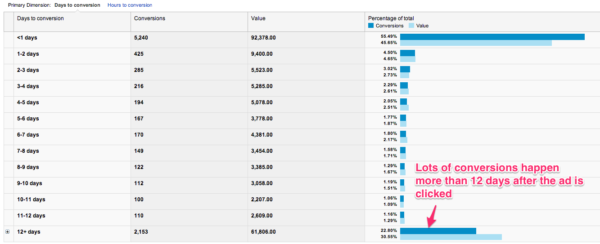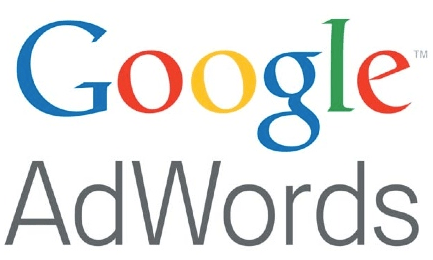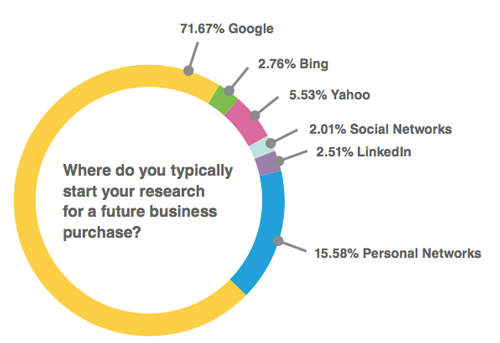Last month, I covered how to use call tracking for AdWords to shed some light on how to track phone calls as conversions.
This month, I’d like to continue in that vein and share some more tips for tracking and optimizing by conversions, whether they are of the call or online variety. When I first joined Google in 2002, conversion tracking didn’t even exist in AdWords until I helped build it. So it gives me great pleasure to see how much more advanced it’s gotten since those early days of PPC.
1. Automate Bidding Based On Call Data
Shortly after I wrote about the complexity of counting the true number of conversions when you’re tracking both calls and website actions, AdWords made an announcement that they will simplify things tremendously by including call conversions in the conversion column, making it possible for their automated bid rules to use this data to set bids. For example, you can now use the “Target CPA” flexible bid strategy to achieve a desired cost-per-call automatically.
I only saw the announcement in email, so I’ll share it here:
I think this is a great change that will make reporting and bid management much easier.
2. Track AdWords Conversions From A CRM
If sales at your company happen mostly offline or after multiple phone calls, neither regular conversion tracking nor call conversion tracking are all that useful because they can’t track these offline sales.
With Google’s launch of Conversion Import in September, this all changed and advertisers can now self-report offline conversions. To link a sale to the click that got the customer into your sales funnel, all you have to do is store Google’s unique click ID (the gclid parameter they automatically attach to the destination URL whenever a user clicks an ad) in a CRM.
Then when the sale is made, that gclid can be reported back to AdWords where it will be shown as a conversion for the correct keyword and ad. And once the conversion is in the system, it can be used to set bids and optimize the account. Several CRMs have provided integrations, and Google also wrote some of the javascript needed to capture the gclid automatically into your CRM.
![]()
AdWords Offline Conversion Tracking
3. Conversions Seem Down? Consider Conversion Delays
You’re probably monitoring the performance of AdWords all the time and comparing it to performance in a previous period, something that’s much simpler since the recent launch of date comparison reporting. When you do this though, be aware that conversions in AdWords are associated with the date of the ad’s impression and not the date the conversion took place.
This means if you look at the data for yesterday right now and then again in a week, the total number of conversions will usually be different because as more conversions trickle in, they will get added to the day of the ad’s impression. So when comparing conversion metrics, be sure you understand how many conversions tend to accrue in the days following the impression.
One way I measure conversion lag is with an AdWords Script that records my stats in a Google spreadsheet automatically every hour. Then, I can go back to the report for some date in the past and compare it to the metrics I see now. That gives me insight into how many additional conversions I can expect to see in the days after my ad was shown. The benefit of using an AdWords Script is that I can find out conversion lag for any item in my account, including individual keywords.
An approach that requires no scripting to get this data is the “Time Lag” report in Conversion Funnels. This will show you both the number of conversions and the value of those conversions for your entire conversion window. Keep in mind that you can set the conversion window; so, if you find that many conversions happen close to the end of the default 30 day conversion window, you might consider increasing your conversion window to something longer, up to 90 days.
Knowing how long it takes for conversions to happen has been invaluable to me on several occasions. Now, when a client asks why conversions seem low today compared to last week, I can point them to the data that shows how many conversions are still likely to get reported later, and it helps reassure them that their account is in good shape.

Conversion Funnels in AdWords can show the time lag for conversions, giving you a better sense of how long you have to wait to see 100% of likely conversions reported.
4. Importing Conversions From Google Analytics Is Not Enough
When considering whether to do conversion tracking with AdWords or with Google Analytics (GA) goals, my experience is that GA goals are usually reported with more delay than AdWords conversions. So, for any campaigns where I let Google handle my bid management, I prefer to use AW conversion tracking.
I’m not saying not to track goals in GA because without that, you lose some very important insights from GA’s more powerful reporting engine. In some cases, I even import GA goals into accounts where I already use AdWords conversion tracking because I know I can still look at the 1-per-click conversion metric to get a correct count of how many clicks converted.
Another reason to not rely solely on GA for conversion data is that once in a while, a new feature still comes along that only works with one of the two systems. For example, the brand new cross-device conversion estimates says it requires AdWords conversion tracking.
5. Improve Enhanced Campaign Performance With Conversion Tracking
Conversion Optimizer, Google’s automated bidding algorithm, has always been useful because it’s the only system in the world that can look at real-time factors to place unique bids for every search on Google. It considers the time, day, location, extra words in the query, and other factors that correlate to conversions to set the right bid for every single search.
Third-party bid tools can only update bids periodically and they never have as much context about the search as Google does. Unlike on display, where there are plenty of real-time bidding solutions, for Google Search, only Google’s bid management can set the most effective bids: real-time bids.
Now that AdWords is becoming an ever-more complex big data problem, with the ability to set bid modifiers for geos, dayparts, and devices, I think it makes more sense than ever to give Google’s bid management a try. I’ve written about how to use AdWords Scripts to automate complex mobile bid modifier calculations; however, even with sophisticated methods like that, I still can’t set bids for tablets, and my bid modifiers are all layered on top of each other in ways that may be suboptimal.
Here’s an example of why setting bid modifiers may not give you optimal performance: you may find from looking at the “device” segment in a report that a -20% mobile bid multiplier will give you the CPA you want. At the same time, the “day of week” time segment report may indicate a +15% modifier on Saturdays is ideal. But does that mean that searches on mobile devices and on Saturdays should have a modifier of (0.8 * 1.15 = 0.92)?
It may very well be that Saturdays are a great day on mobile and should have a higher bid. Without building many duplicate campaigns with different bid modifiers, there’s no way to achieve the ideal result; but, Google’s bid management can handle it with just a single campaign. For that reason, I’m more than happy to tell Google about all my conversions so they can help manage bids to achieve my desired outcome.

Big Data
So, those are a few things I’ve learned about conversion tracking in AdWords over the years. I’d love to hear your tips!
Contributing authors are invited to create content for Search Engine Land and are chosen for their expertise and contribution to the search community. Our contributors work under the oversight of the editorial staff and contributions are checked for quality and relevance to our readers. The opinions they express are their own.



